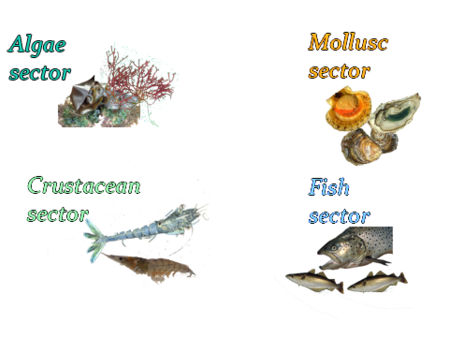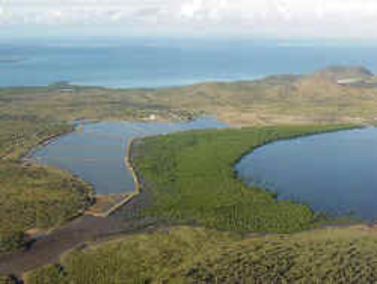Shrimps
Name : | Penaeid shrimp (blue shrimp and Kuruma eibei shrimp) (map n°1) | |
|---|---|---|
Scientific name : | Litopenaeus stylirostris | Marsupenaeus japonicus |
|
| |
Size : | originally from the Pacific coast of Central and South America – Maximum size 23 cm | Indo-Pacific- Mediterranean – Maximum size 22 cm |
These are the two species farmed in France (Continental and Overseas)
Several other species are subject to important development including Penaeus chinensis, Litopenaeus vannamei and Penaeus monodon (map n°2) .
History: from the pioneers until today…
Initiated in New Caledonia by the Professor Doumenge in 1970, shrimp farming did not really start until the beginning of the eighties. L. stylirostris replaced the local species in New Caledonia in 1981. The first installations farming M. japonicus were created in former salt marshes on the island of Noirmoutier in 1985. The first attempts at rearing penaeid shrimp larvae were made in Japan in 1939, in the United States at the end of the 1960s and in Tahiti, at the Centre Océanologique du Pacifique in 1973. The 2 species had been imported from the zones whence they originated. From 1974, they were reproduced in captivity in the laboratories of Ifremer.
Farming methods and production cycles:
The breeding adults are mainly reared in ponds on land (the M. japonicus spend the winter in heated holding tanks) then transferred into the incubation chamber where egg-laying takes place. L. stylirostris is artificially inseminated while M. japonicus is reproduced naturally.
The larvae are fed with live prey and micro particles.
The production hatcheries supply post-larvae to grow out farms.
Rearing takes place in land ponds at a density of 5 to 35 shrimps per m². The rearing process takes from 5 to 8 months. The shrimp are fed on composite feed manufactured from raw material such as fish meal, maize (+ mineral salts and vitamins).
Evolution of the production:
The production of M. japonicus in France and of L. stylirostris in Polynesia remains limited (25 and 50 tons in 2002). Whereas in New Caledonia it reached 1,830 tons in 2002.
The creation of new farms in New Caledonia will enable current production to be doubled.
Product value enhancement
The shrimp are sold fresh on local markets. New Caledonia exports 1,380 tons of frozen shrimp.
Shrimp in figures
1 830 | the tonnage of shrimp produced in New Caledonia in 2002 |
|---|---|
1 380 | the tonnage of frozen shrimp exported by New Caledonia |
900 | the number of jobs created by shrimp farming in New Caledonia. This activity participates in the creation of an equilibrium between the rural areas and the capital, Noumea |
25 | the production (in tons) of shrimp in metropolitan France |
50 | the production (in tons) of shrimp in Polynesia |
23 | the turnover in millions of Euros for this industry in 2002, 17 of which for export. |
11 à 132 | the size of the farms in hectares (1 ha = c. 2.5 acres) depending upon whether they are family run (a few hectares spread over several small ponds) or companies with one main investor (several dozen hectares with much larger ponds). |
Strengths / Weaknesses
Strengths | Weaknesses |
|---|---|
|
|




